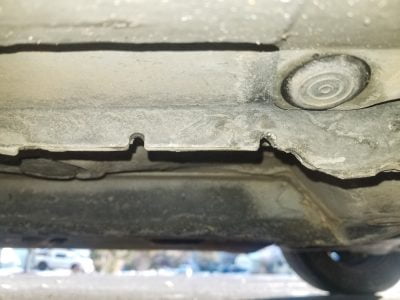 We’ve been talking about flat tires recently because they can be expensive, dangerous and it’s the time of year when the weather gets cool and tires start to go flat. Today we’re talking about how to change a flat tire but we also want to make sure you know what will happen if you drive on a flat tire and what your options are to repair a flat tire
We’ve been talking about flat tires recently because they can be expensive, dangerous and it’s the time of year when the weather gets cool and tires start to go flat. Today we’re talking about how to change a flat tire but we also want to make sure you know what will happen if you drive on a flat tire and what your options are to repair a flat tire
Before we get into how to change your flat tire, we wanted to help explain why your tires might be going flat this time of year. We all know that as temperature changes things contract and expand. The air in your tires follows the laws of physics so on a cold day your tires can be significantly under-inflated. You may notice that your tire pressure light is on when you first start driving but as you go it turns off. Driving on under-inflated tires puts more stress on the sidewall of your tire and on the bead where the tire meets the rim and forms a seal. As you drive force on the bead can cause it to slip every so slightly and let some air out. In colder weather your tires could lose as much as 1 PSI per day even if they don’t have any leaks.
If you’ve got a flat, don’t drive on it! Check out the article we mentioned above for more reasons why. It also turns out that changing a spare tire is pretty easy!
How to Change a Flat Tire
Loosen the lug nuts on the flat tire
Jack up your vehicle until the flat tire is far off the ground
Remove the lug nuts and the flat tire
Put your spare on and hand tighten the lug nuts
Lower your vehicle just until the spare tire touches the ground
Tighten the lug nuts
Lower your vehicle and remove the jack.
The scariest part of this whole operation is getting your vehicle safely jacked up. It’s important to make sure your car doesn’t roll while it’s on the jack! Put your vehicle in park, set the emergency brake and put blocks or rocks or something in front of and behind 2 wheels you don’t plan on removing.
 Also, you need to make sure your jack is in the right spot. There should be directions or a diagram either on the jack or where the jack is stored. On most cars the correct jacking point is on the pinch weld closest to the tire you’re removing and on most trucks or SUVs it’s on the frame.
Also, you need to make sure your jack is in the right spot. There should be directions or a diagram either on the jack or where the jack is stored. On most cars the correct jacking point is on the pinch weld closest to the tire you’re removing and on most trucks or SUVs it’s on the frame.
As far as your lugnuts are concerned you need to loosen them while your car is on the ground. It will probably take a lot of force to break them free and get them spinning off and you don’t want to be doing that while your vehicle is precariously placed on a jack. When it comes to tightening them when you’re done, most lug nuts on cars and light-duty trucks can take anywhere from 80-100 ft-lbs of torque. If your lug wrench is about a foot long (most spare tire lug wrenches are) then you need to be pushing on it with 80-100 lbs of force to get the lug nuts tight so don’t be shy.
Most spare tires aren’t rated for high speeds so make sure you read the instructions on the tire or in it’s storage compartment to stay safe.
Even if you don’t have a flat tire, now would be a good time to check your vehicle to make sure it has all the necessary tools and to ensure your spare is properly inflated. Besides the tire, you should have a jack and any tools required to raise and lower it along with a lug nut wrench that fits the lug nuts on your car.
BlueDevil Products can be found on Amazon.com or at AutoZone, Advance Auto Parts, O’Reilly Auto Parts, NAPA, and other major auto parts retailers.
Related Articles
Search Blog
Subscribe
Blog Categories



